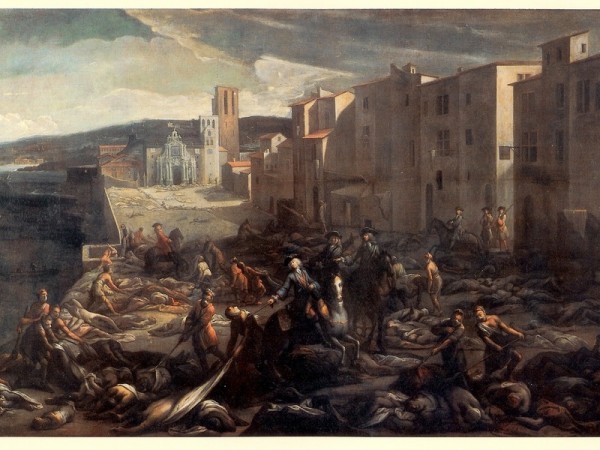By Ana Verayo, | January 25, 2016

The Black Death plague in Marseille in 1720.
The plague has destroyed European civilizations over the span of hundreds of years where massive waves released deadly and gruesome pandemics of this disease such as the third pandemic of the plague, which started in the 19th century and still exists today.
Like Us on Facebook
However, the most famous one is the Black Death, where it killed off 30 to 50 percent of the European population. This strain began during the 14th century however its resurgence from time to time during the 18th century left scientists and researchers baffled.
In this new study, researchers from the Max Planck Institute in Germany, now reveals answers about how this particular wave persisted and returned from time and again since it did not die off, but apparently, has hidden somewhere in Europe during waves spanning hundreds of years.
The team then extracted DNA from 10 plague victims from their teeth, where the remnants were taken from dead bodies of the Great Plague between 1720 and 1722 in Marseille, south of France. Many believe that this is the last strain of the medieval plague in Europe.
The teeth possessed some of this plague's DNA however, these are only bits and pieces of the genome, where researchers have no choice but to reconstruct the rest of the genetic code. According to Alexander Herbig from the Max Planck Institute for the Science of Human History, it was indeed a challenge to reconstruct these ancient genomes, and it was surprising to discover that this 18th century plague seems no longer existent and circulating, as it descends directly from the Black Death of Europe some 700 years prior to this.
Researchers conclude that the plague that swept the Marseille in now extinct, where its origins are highly unknown. Theories about the plague's resurgence over the centuries include trading ships from Asia entering Europe that transported disease carrying rats, that triggered the "Big Bang" of plague, remaining in Europe for good.
This theory also seem to be fairly accurate, where three plague pandemics namely the Justinian, the Black Death and the modern one are all genetically originating from different variations of the plague that was imported from Asia. During the 18th century, Marseille was considered to be one of the greatest cultural hubs in the Mediterranean, where ships from all over the world would dock in this place, eventually bringing this deadly disease.
The plague outbreak in the Marseille is identified to be the almost the same as the 14th century Black Death plague, proving that the Black Death did not entirely died off in Europe since evidence shows that the disease remained hidden in some unknown gene pool for hundreds of years.
According to director Johannes Krause of the Department of Archaeogenetics at the Max Planck Institute, it is terrifying to know that the plague might be hiding in some living host around Europe, that is not yet known to scientists. Further research can help in identifying the host species of the plague and also the reason behind its resurgence for every hundreds of years.
This new study is published in the journal eLife.
-
Use of Coronavirus Pandemic Drones Raises Privacy Concerns: Drones Spread Fear, Local Officials Say

-
Coronavirus Hampers The Delivery Of Lockheed Martin F-35 Stealth Fighters For 2020

-
Instagram Speeds Up Plans to Add Account Memorialization Feature Due to COVID-19 Deaths

-
NASA: Perseverance Plans to Bring 'Mars Rock' to Earth in 2031

-
600 Dead And 3,000 In The Hospital as Iranians Believed Drinking High-Concentrations of Alcohol Can Cure The Coronavirus

-
600 Dead And 3,000 In The Hospital as Iranians Believed Drinking High-Concentrations of Alcohol Can Cure The Coronavirus

-
COVID-19: Doctors, Nurses Use Virtual Reality to Learn New Skills in Treating Coronavirus Patients







